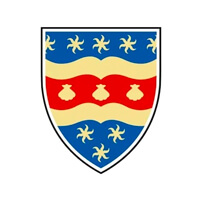fees waived
Art History, BA (Hons)
University of Plymouth, United Kingdom
Subject ranking
UK / ARWU 2024 51st
UK / QS 2025 61st
UK / THE 2025 63rd
Costs
food & rentS$17K / year
Entry requirements
Scholarships
Unlimited quantity
Unlimited quantity
Unlimited quantity
Limited quantity
Information
Code
Code
Intakes
Website (External)
Programmes
Information
Duration
2028
Course summary
Discover why art from the past still matters to our modern society in the city that spawned Joshua Reynolds, the first president of the Royal Academy. Learn what art can teach us about the past and how it can help us shape a better future. Build links with art historians and archivists and prepare for a career in the art world through our connections with high profile, international institutions like the National Gallery and Tate Britain, and benefit from the contacts of our published academics.
- No exams. 100% coursework.
- Art throughout history. Art history at Plymouth enables you to explore our complex past and navigate visual culture. Let our immersive modules take you across the world, from the Renaissance period to the present, from 14th-century fresco painting in Italy to artistic responses to the atomic bomb.
- Expand your horizons. We believe strongly in the experience of seeing works of art first-hand. Every semester we take students to major UK galleries and museums. We also offer an international field trip module, an intensive week of study abroad. Past destinations have included Rome, Florence, Vienna, Paris, New York City and Washington, DC.
- Get involved. Prepare for your future career by participating in an internship or work experience. Our students have successfully interned at Tate Britain, Sotheby’s, the National Trust, Plymouth Arts Centre, The Arts Institute and the Wallace Collection.
- Learn from experts. Our staff research activities as authors and curators underpin our teaching, which emphasises specialised knowledge and professional skills.
Modules
In your first year, we’ll introduce you to the discipline of art history. You’ll investigate the development of museums and galleries across the world, engaging in fieldwork using outstanding local examples. You’ll explore popular periods of art history, including 19th century French art and the Renaissance. To round off the year, you’ll analyse contemporary critical writings on art and develop your own critical skills.In your second year, you’ll visit a major European city – a trip designed to complement your second year modules and give you the chance to get hands-on with fieldwork. Previous destinations include Rome, Vienna and Paris. You’ll also hone your critical skills by investigating critical art theory.Gain valuable on-the-job experience through our optional placement year. We will support you in your second year in deciding whether to take this opportunity, and assist you in finding a placement and being prepared for it.In your final year, you’ll continue to prepare for your career in the arts with further training in art historical research methods, as well as giving you dedicated career guidance. You’ll have the chance to study optional modules, including power patronage and ideology and studies in 20th century European art. You’ll write a substantial dissertation on the topic of your choice, previous topics include the representation of Salome in French Symbolism, and the sculpture of Barbara Hepworth.The modules shown for this course or programme are those being studied by current students, or expected new modules. Modules are subject to change depending on year of entry.
Assessment method
100% of assessment is by coursework.
Qualified teacher status (QTS)
To work as a teacher at a state school in England or Wales, you will need to achieve qualified teacher status (QTS). This is offered on this course for the following level:- Course does not award QTS
In your first year, we’ll introduce you to the discipline of art history. You’ll investigate the development of museums and galleries across the world, engaging in fieldwork using outstanding local examples. You’ll explore popular periods of art history, including 19th century French art and the Renaissance. To round off the year, you’ll analyse contemporary critical writings on art and develop your own critical skills. In your second year, you’ll visit a major European city – a trip designed to complement your second year modules and give you the chance to get hands-on with fieldwork. Previous destinations include Rome, Vienna and Paris. You’ll also hone your critical skills by investigating critical art theory. Gain valuable on-the-job experience through our optional placement year. We will support you in your second year in deciding whether to take this opportunity, and assist you in finding a placement and being prepared for it. In your final year, you’ll continue to prepare for your career in the arts with further training in art historical research methods, as well as giving you dedicated career guidance. You’ll have the chance to study optional modules, including power patronage and ideology and studies in 20th century European art. You’ll write a substantial dissertation on the topic of your choice, previous topics include the representation of Salome in French Symbolism, and the sculpture of Barbara Hepworth. The modules shown for this course or programme are those being studied by current students, or expected new modules. Modules are subject to change depending on year of entry.
A local representative of University of Plymouth in Singapore is available online to assist you with enquiries about this course.

